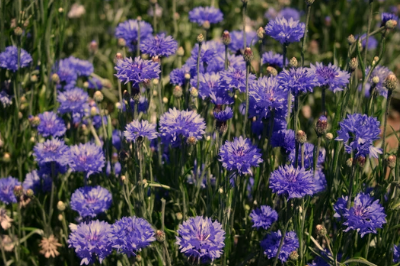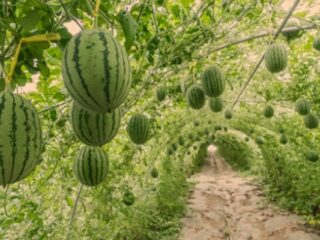Cornflowers, with their vibrant colors and delicate beauty, are a delightful addition to any garden or landscape.
Whether you’re looking to create a stunning border, enhance your wildflower meadow, or simply enjoy cut flowers, planting cornflower seeds is a rewarding endeavor.
However, to ensure optimal growth and blooming, it’s crucial to understand the right time to sow these seeds.
In this post, we will explore the best practices for planting cornflower seeds, taking into account climate considerations, choosing the right season (spring or fall), providing valuable tips for successful cultivation, and diving deeper into the different varieties available.
What Are Cornflowers?

When To Plant Cornflower Seeds
Cornflowers, scientifically known as Centaurea cyanus, belong to the Asteraceae family and are native to Europe.
They are popular for their vibrant blue color, although other cultivars come in shades of pink, purple, and white.
Cornflowers boast attractive lance-shaped leaves and produce intricate flowers with a prominent central disc surrounded by ray-like petals.
These flowers are not only visually appealing but also attract a wide range of pollinators, making them an excellent addition to any pollinator-friendly garden.
When To Plant Cornflower Seeds: Climate and Zone

To ensure the healthy growth of cornflowers, it’s essential to consider your specific climate and hardiness zone.
Cornflowers are generally adaptable and can be grown in a wide range of climates.
They are typically classified as hardy annuals, meaning they can withstand mild frost. Cornflowers thrive in full sun exposure, requiring a minimum of six to eight hours of direct sunlight daily.
They prefer well-drained soil and moderate water requirements, although they can tolerate some dry periods.
Cornflowers are known to be drought-tolerant, making them an excellent choice for regions with limited rainfall.
It’s important to note that some cultivars may have specific temperature or soil pH preferences, so it’s worth researching the particular variety you intend to grow to ensure the best results.
Spring or Fall: Choosing the Right Season

When it comes to planting cornflower seeds, you have two primary options: spring or fall. Both seasons have their advantages and considerations, so let’s explore them in detail.
Spring Planting
In most regions, spring is a popular time to sow cornflower seeds. It’s crucial to time your spring planting correctly, considering the last frost date and soil temperature.
As the soil warms up, typically reaching around 55°F (13°C), it becomes suitable for cornflower seed germination.
In regions with colder climates, it’s important to wait until the soil has warmed sufficiently to avoid frost damage to the young seedlings.
Timing can vary, so consult local gardening resources or extension offices to determine the ideal planting time in your specific area.
Spring planting allows cornflowers to establish strong root systems before the heat of summer arrives.
It also provides an opportunity for earlier blooming, allowing you to enjoy their colorful display throughout the summer months.
Before sowing the seeds, prepare the soil by loosening it to a depth of about 6 to 8 inches (15 to 20 cm).
Remove any weeds or debris and incorporate organic matter such as compost or well-rotted manure to improve soil fertility and drainage.
Rake the soil smooth, ensuring there are no large clumps or rocks. Cornflower seeds can be sown directly into the prepared soil.
Space the seeds about 6 to 12 inches (15 to 30 cm) apart to allow adequate airflow and prevent overcrowding as the plants mature.
Sow the seeds to a depth of approximately ¼ to ½ inch (0.6 to 1.3 cm), and gently press the soil to ensure good seed-to-soil contact.
Water the area lightly after planting, keeping the soil consistently moist but not waterlogged.
Once the seedlings emerge, thin them if necessary to maintain the desired spacing.
Regularly monitor the plants for pests, such as aphids or caterpillars, and take appropriate measures to control them.
Also, ensure that the cornflowers receive about 1 inch (2.5 cm) of water per week, either through rainfall or supplemental irrigation, to promote healthy growth and blooming.
Fall Planting
Fall planting offers some unique advantages for cornflower enthusiasts.
When you sow seeds six to eight weeks before the first expected frost, you can enjoy earlier blooms and stronger root development in the following spring.
Fall planting allows the seeds to experience a period of stratification, which is a natural cold treatment that breaks seed dormancy and triggers germination.
This cold treatment simulates the natural conditions that occur in winter, providing the seeds with a head start in the upcoming growing season.
To prepare for fall planting, ensure that the soil is well-prepared and free from weeds or debris.
Rake the soil smooth and create furrows or rows for sowing the seeds. Scatter the cornflower seeds evenly in the furrows, aiming for a spacing of 6 to 12 inches (15 to 30 cm) between plants.
Cover the seeds with a thin layer of soil, approximately ¼ to ½ inch (0.6 to 1.3 cm) deep, and gently firm the soil.
Water the area thoroughly after planting to ensure good seed-to-soil contact and promote germination.
It’s important to protect the young seedlings during the winter months.
Apply a layer of straw or other organic mulch around the plants to insulate the soil and provide some protection against frost.
Alternatively, you can use frost blankets or row covers to shield the seedlings from harsh weather conditions.
Remember to remove the mulch or covers in early spring to allow the plants to emerge and receive adequate sunlight.
Additional Tips for Successful Cornflower Planting
To further enhance your cornflower planting success, consider the following tips:
Watering Techniques
Cornflowers prefer regular but not excessive watering. Water deeply at the base of the plants to encourage robust root growth.
Avoid overhead watering, as wet foliage can promote the development of fungal diseases. During dry periods, monitor the soil moisture level and provide supplemental irrigation as needed, ensuring the plants receive about 1 inch (2.5 cm) of water per week.
Adequate Airflow and Spacing
Proper airflow between plants is crucial to prevent diseases, such as powdery mildew.
Ensure sufficient spacing between cornflowers to allow air circulation and reduce the risk of fungal infections. Thinning seedlings, if necessary, is important to achieve the recommended spacing.
Organic Fertilizers and Compost
Boost the growth and blooming potential of your cornflowers by using organic fertilizers and compost.
Before planting, incorporate well-rotted compost or aged manure into the soil to improve its fertility and structure.
This provides the plants with essential nutrients and promotes healthy growth.
During the growing season, you can also apply a balanced organic fertilizer according to the manufacturer’s instructions to support the plants’ nutritional needs.
Deadheading
To promote continuous blooming, remove spent flowers by deadheading.
This practice redirects energy into producing new blooms and keeps the plants looking tidy.
Simply pinch or cut off the faded flowers just above a leaf node or pair of leaves. Regular deadheading encourages cornflowers to produce more flowers throughout the season.
Observation and Adjustment
Every garden is unique, and plants may respond differently to various care practices.
Observe your cornflowers closely, monitor their growth, and adjust your watering, fertilizing, and maintenance practices accordingly.
If you notice any signs of pest infestation or disease, promptly take appropriate measures to address the issue.
Regularly inspect the plants for signs of stress, such as wilting or discoloration, and address any underlying problems promptly to ensure their continued health and vigor.
Conclusion
Planting cornflower seeds is a fulfilling endeavor that brings vibrant colors and natural beauty to your garden.
So, when you understand your climate, choose the appropriate season (spring or fall), and follow the recommended planting techniques, you can ensure the successful growth and blooming of your cornflowers.
Experiment, have patience, and enjoy the colorful rewards of your efforts.
Whether you choose to grow cornflowers as standalone beauties or incorporate them into various garden designs, these enchanting flowers are sure to add charm and elegance to any landscape. Happy planting!




